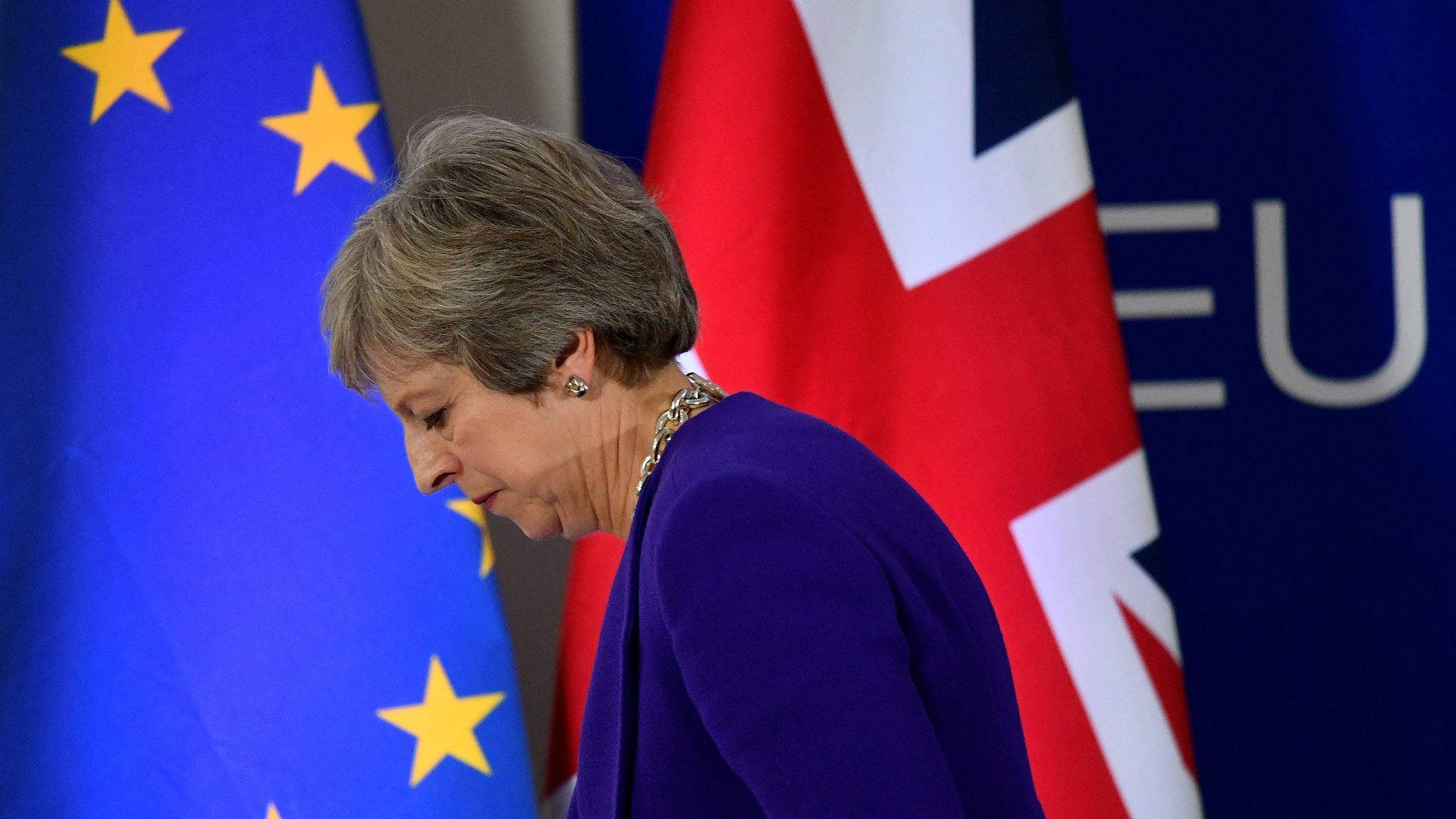The one thing that’s certain about Brexit is that it’s baffling for the British pound
One moment, the UK and the European Union are reportedly on the verge of a deal leading to a close future relationship between the two, avoiding the dreaded “no-deal Brexit.” The next, infighting in the British government and growing calls for a second referendum threaten to blow everything up.


One moment, the UK and the European Union are reportedly on the verge of a deal leading to a close future relationship between the two, avoiding the dreaded “no-deal Brexit.” The next, infighting in the British government and growing calls for a second referendum threaten to blow everything up.
Where does the Brexit process actually stand? It’s hard to say from day to day—or, really, from hour to hour—and the confusion is giving markets whiplash. One measure of volatility for the pound is now at its highest since January 2017.
While volatility is not as high as when the Brexit referendum took place—the gauge reached 30 in June 2016, versus around 11 today—pound traders are changing direction on even the faintest glimmer of hope for a deal or dose of reality that the hurdles are high. The UK is due to leave the EU at the end of March; the time needed to ratify a deal in British and European parliaments is slipping away.
In the first week of November, the pound climbed 3% against the US dollar amid news that an amicable withdrawal agreement was imminent. British prime minister Theresa May reportedly had her cabinet on standby to sign-off on an agreement last week. That moment came and went with no meeting.
In the past three trading days, the pound has dropped about 2% against the dollar. On Friday afternoon (Oct. 9), Jo Johnson, a cabinet minister (and brother to Brexiteer Boris Johnson, who is calling for a “mutiny” against the prime minister) resigned from government and backed a second referendum. He voted to remain in the EU in the 2016 referendum. “Britain stands on the brink of the greatest crisis since the Second World War,” Johnson wrote after resigning.
The pound-dollar’s volatility substantially diverged from swings in the value of the euro and yen versus the dollar in recent months. The pound-dollar currency pair is the third most traded in the world, after the dollar-euro and dollar-yen, with an average daily turnover of $470 billion.
How the current impasse will be overcome is unclear. While most people agree that a “no-deal” Brexit is the worst-case scenario, whether a deal could pass parliament is an open question, as May faces opposition from both hardliners within her party, pro-EU moderates, and opposition party politicians.
One of the biggest sticking points—supposedly the last one remaining—is how to avoid a hard border between Northern Ireland and the Republic of Ireland. One plan would leave the UK in a customs arrangement with the EU, even after a transition period ends in 2020, which rankles the Brexiteers. However, Brussels won’t proceed without a backstop in place.
All the while, demands for a second referendum on the terms of a post-divorce deal are getting louder. The so-called “People’s Vote” would give the public a chance to support or reject whatever deal the UK and Brussels agree upon. May has ruled out holding a second vote.
As divided as the UK is on what happens next, so are currency traders and strategists. Some believe that a deal is just around the corner, taking heart from comments from the likes of European Commission president Jean-Claude Juncker, who said yesterday (Nov. 12) that a deal could be reached within weeks. Jordan Rochester, a strategist at Nomura, wrote in a research note that the pound had fallen “on little concrete news to cling to.” Rochester said he was still betting on the pound to climb against both the euro and the dollar.
On the other hand, analysts at Danske Bank are warning against such optimism. “First of all, we have been disappointed before,” they wrote. “In our view, the real test is not whether PM Theresa May can sign a deal with the EU, but whether it can pass the UK House of Commons.” Though they still expect a deal to be reached, even if it takes until January, they ascribe a 15% probability to a “no deal” outcome.
Strategists at Standard Bank, for their part, said they now recommend shorting the pound. They are targeting a level of $1.268 to the pound, versus around $1.29 at the time of writing.
And so, right now, the only certainty is uncertainty.